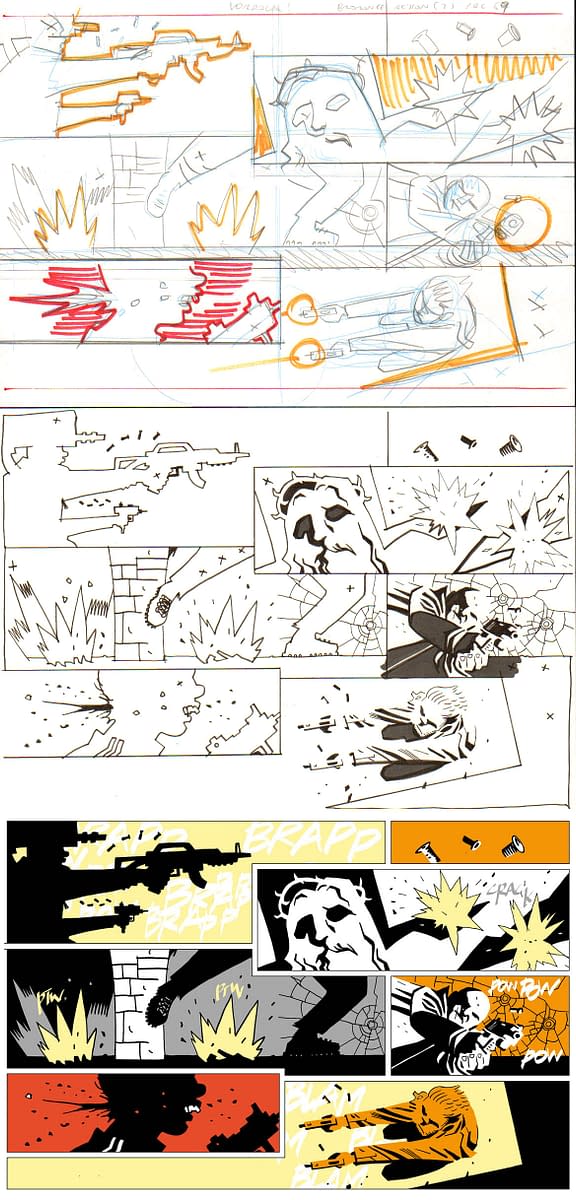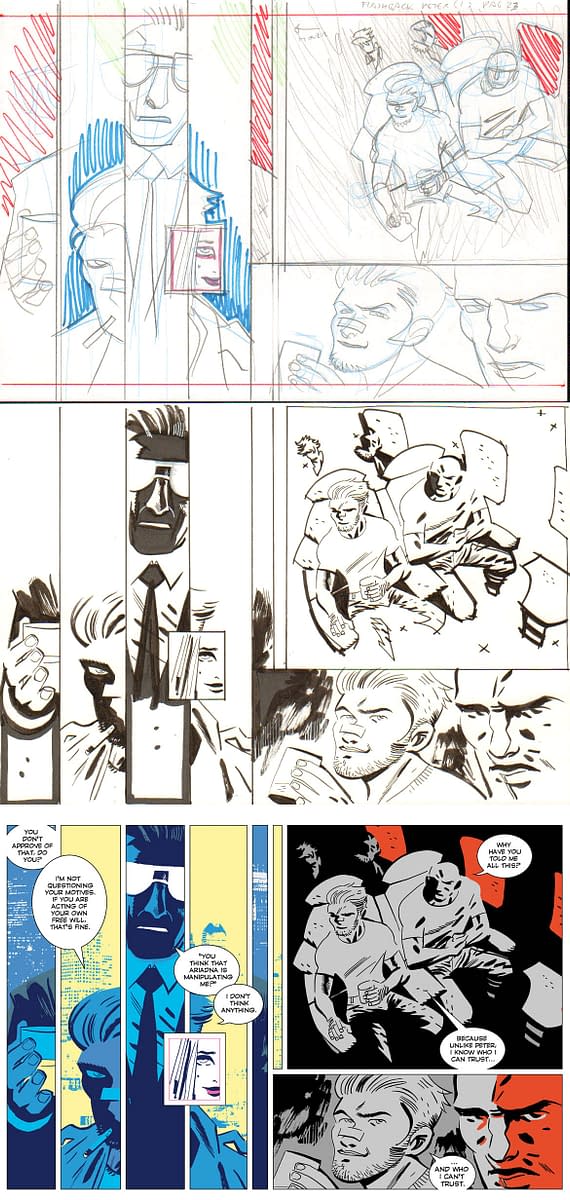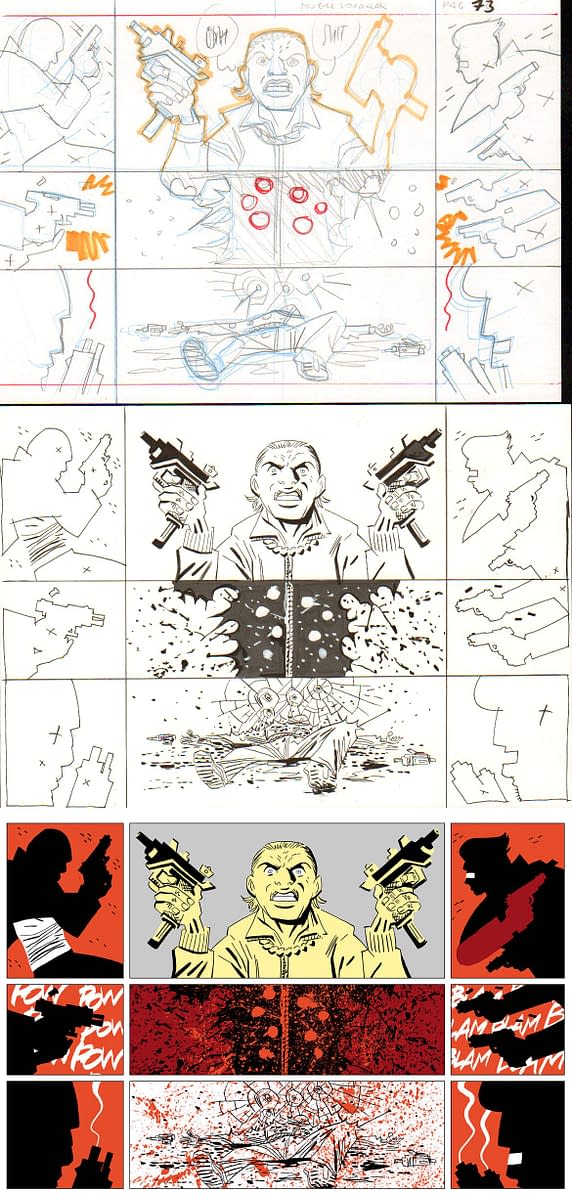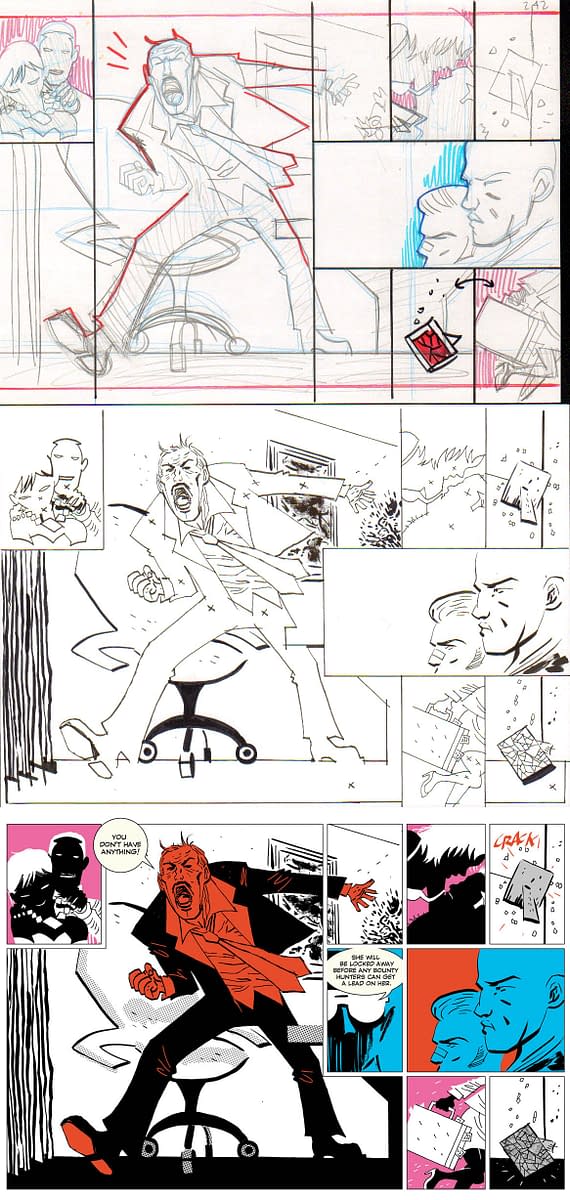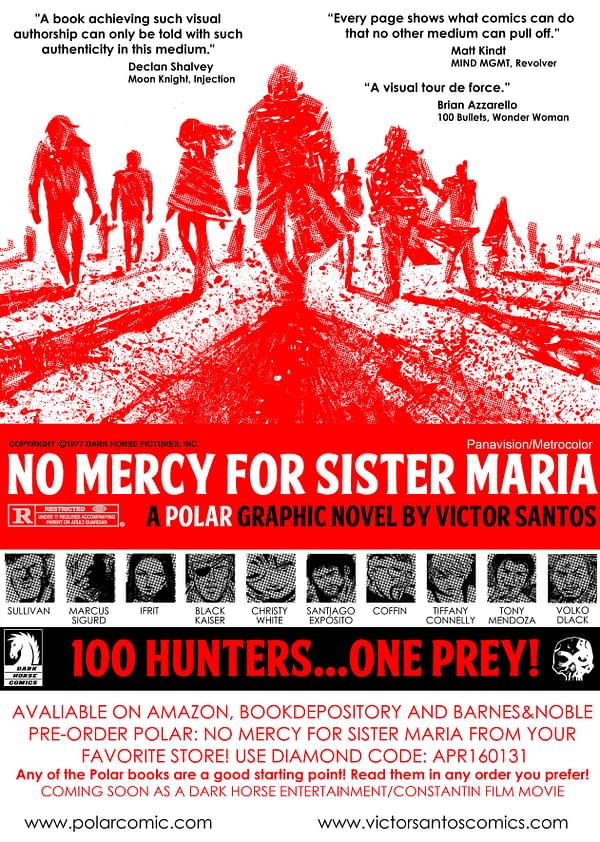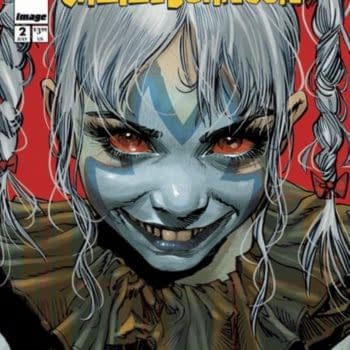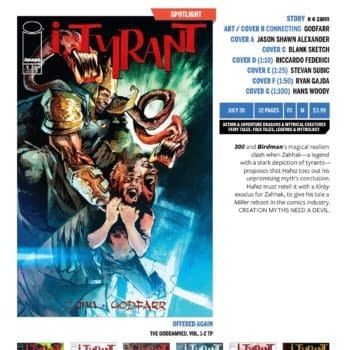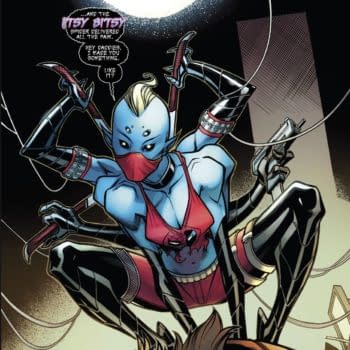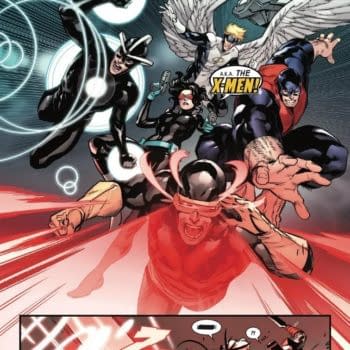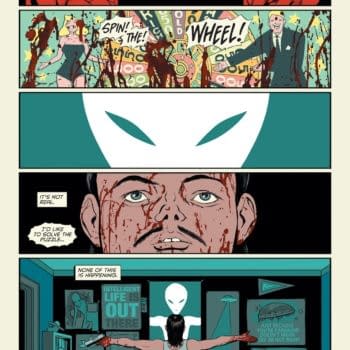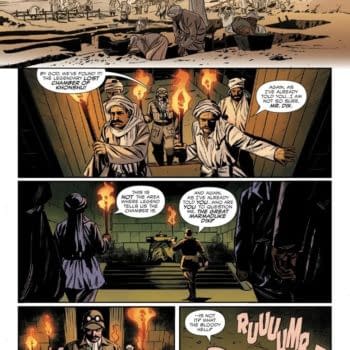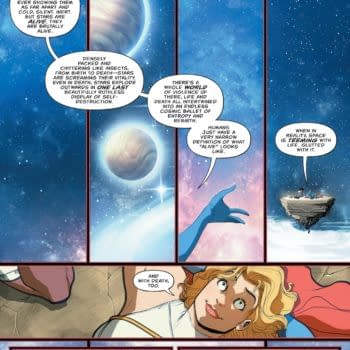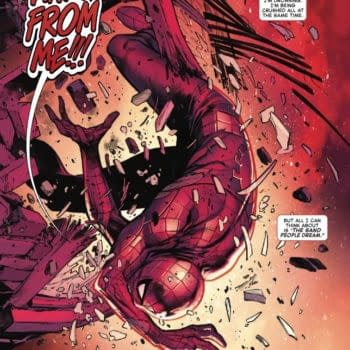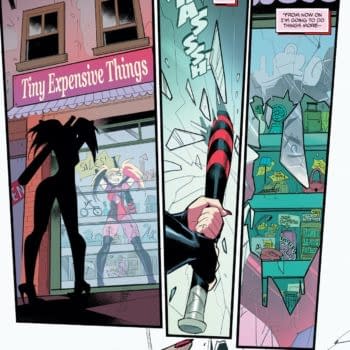Posted in: Comics | Tagged:
No Mercy For Sister Maria – Victor Santos Talks Polar
Polar by Victor Santos is an action thriller in the manner of Frank Miller and Jim Steranko. Created as an ongoing on-line series, it runs without dialogue. However, for the collected print versions, dialogue and captions are added.
I talked to Victor Santos about his upcoming third volume collection, Polar: No Mercy For Sister Maria. It gets a little bit… Catholic. And we got some process work to boot.
Rich Johnston: Okay, the big one. The original webcomic has no speech balloons and only naming captions. Aside from diegetic use of words such as signs, newspaper headlines and the lik,e it was a silent comic originally. For the Dark Horse publication you are adding dialogue. Why? If it was not necessary to you before, what changed? When reading Polar without words, I don't fully comprehend everything, but I get enough to work out what's going on, and that's part of the reading experience. Is there a danger that dialogue will change that too much?
Victor Santos: When I created the first Polar story (Polar: Came from the Cold), the adding of dialogue was Dark Horse's suggestion: they thought publishing a silent book was a little risky. But I took the oportunity to play with the words as an additional element of pacing and composition. If image and composition were songs, words would act as the coordinated lyrics. Later, with the second, and now this third season of publishing the silent comic on my website, I worked keeping in mind that the future version would have dialogue. Reading the comics on the website and reading the comic in the book are different experiences because they are essentially different mediums. The webcomic was silent, not only because of a storytelling decision, but also it was a way to create something that would be understandable all over the world. The internet is immediate, so I drew and uploaded two pages per week, and then people would read them quickly. The webcomic is pure action and can quickly be consumed from screen to screen.
But the book is for the American market, and the paper-based experience is different. You can read it calmly if you wish, so I used this possibility to change the rhythm of the comic and add story backgrounds for the characters via the use of text. And because books are structured in two page groups, I must be more careful how I place some highlights of the story. So, every Polar book is a brand new cut of each webcomic season, corrected and expanded. No Mercy for Sister Maria has 30 new comic pages than the webcomic, and some scenes are in a different order… Even new characters appear! It´s an absolute "director´s cut". My plan was always to restructure the best ideas of the webcomic season, keeping the spirit of storytelling experimentation, but offering a solid self-contained tale in the paper version.
RJ: In a world where comic book colouring seems to have taken leaps and bounds in what can be achieved, you have chosen to use broad acres of flat colour. The work resembles classic "print" style with blocks of pinks and blues sitting behind the black lines. It gives me the feel of fanzines, bill posters, cheap advertising. How does that sit with the hard crime stories you tell? Is it just about making them feel more lurid or is there other intent?
VS: Well, my origins are in fanzines and self-published comic books, but my point was to recover something I find is lost in most modern comic books. I´m not nostalgic, so I didn´t wanted to emulate cheap old prints. My purpose with Polar was to use the art resources that make comic books unique. One of those is the strength of colors to transmit emotions. Comic books are powerful in conveying basic emotions in a very direct way. Of course, in other arts you can also play with mood. In the movies, you can use expressionistic camera work, but you can´t literally paint a sad figure blue, as I do in comics.
The coloring –and by extension the line art–in comic-books is awesome right now. It´s extremely refined. I colored my own art in Furious (a creator-owned superhero miniseries for Dark Horse, written by Bryan Glass) trying to emulate some of my favorite current colorists, searching for their elegance. But for Polar, I wanted something different, so I followed the same premise than I followed with the inking: something minimalistic but rough, less sophisticated, just raw emotions. Hate, Sadness, Love, Revenge, Red, Blue, Orange, Yellow…
RJ: You also use colour for specific panel to panel purposes, drawing the eye from one part of a panel to the other in fast succession. Is this the kind of thing you plan before creating the black and white art, or do you see the possibilities afterwards?
VS: Of course, it´s a composition element too. In Polar: Came from the Cold and Polar: Eye for an Eye, I used red as a unique color note. But these were more simple stories. No Mercy for Sister Maria is like having a chorus, an extravagant ballroom full of assassins, and it works as a self-contained story, alongside the other two volumes. I needed more art elements to balance the figures out, and present these multiple sides in a single conflict.
I used to sketch the pages on rough paper and mark the black and color areas, before the inking, on a separate sheet, but composition is mainly mind-based work, and that´s the fun part. Something I can do while washing dishes or waiting in the supermarket line.
Later, with the pages scanned and coloring them digitally, if I notice something doesn´t work, I try to resolve the jigsaw puzzle by moving some elements, changing colors, and often throwing away my original premise.
RJ: We're used to seeing religion and violence on our television screens and in our newspapers, though these days, if it's religion-based, it generally seems related to Islam. Polar chooses to use Catholic imagery instead. Is that nostalgia for something a little more nineteen seventies, or a commentary on the issues of today, reinterpreted through Polar? Or am I over reaching? There does seem to be a lot of death, violence and religion, soaking the book in Holy Blood…
VS: I use Catholic imagery because it´s the religion with I grew up. In Spain, the Catholic Church was always connected to power. It is power itself. My parents lived in a fascist ultra-Catholic dictatorship with Franco, but I was born into a democracy. My mother voted, pregnant with me, in the first democratic elections. Since then, there have been elected governments, but right now the Catholic Church is still keeping its privileges, for the most part, including extending a long arm over the education of children. The Church is perceived by a lot of people as something dark and authoritarian, and there's a general sense that you don´t mess with them. They have power and money, they have been involved in frauds and abuse without real punishment, so I see them as a dark symbol.
This season of Polar was going be a great epic battle of assassins, as a contrast to the other previous seasons, which were more minimalistic. Inmediately, I thought in terms of angels and demons and the Crusades. All of those images came to me. At the same time, it´s something connected to my love for Sergio Leone movies, where you can see this Catholic element. There's the presence of churches and graveyards, and also subjects like guilt and redemption. Or in the films of John Woo, or Martin Scorsese,–All of them were Catholic. After thinking about these filmmakers, it was easy to fit the tone I wanted, which was to create an epic and elegiac bloody chant.
RJ: Is this kind of material cathartic to create? A kind of therapy for a life raised in Catholicism, or is it pure fantasy for you?
VS: Well, my fiancée studied in a convent school, so I think it´s cathartic for her (laughs). But it´s not cathartic for me, and I´m not trying to settle any scores. This imagery and its symbols, like the Christ, the Cross, the Grail, is tied up in a big way with the concept of Guilt in my culture, and has always fascinated me. As it is for many Spanish children, we didn´t choose our religion (even if our fathers weren´t really Catholic) and sometimes (as people grow, they find their own values) abandon the faith. It´s a strange feeling, a kind of Fall from Grace, a Paradise Lost. So I dislike the Church as an institution but at the same time, I miss the childlike innocence, and I can´t recover Faith, even if I wanted. But I have always been fascinated by the Church's history, symbols and mythology, because they are part of my culture and the western thought.
RJ: I can't talk o you without asking… what is with all the people with eye patches? A nod to the Greek myth of the Cyclops or Nordic Gods? A reduction of a characters's world experience to lacking depth perception? Or just that it looks very cool indeed?
VS: Yeah, the faulty perception angle is always cool (laughs) but my love for patches comes from their mythological component. I love the mythological stories, I have read them since I was a child. I've read a lot of Nordic, Greek, and Asian tales, and my first scripts and self-published books (and my biggest successes in Spain) have been epic, fantasy stories based in mythology. There is something I love in these stories that you can also find in Samurai tales, or Western genre movies, even in the kung-fu films! A kind of character building that moves from outside to inside, defining characters with some simple visual elements (a patch, a scar, a sword, a fighting technique, a ritual before the duel). And then you begin to dig into their personalities, using the story and the conflict to increase their complexity, developing on the archetype. I think it is marvelous, and a great way to create and develop universal characters.
You can read Victor's Polar webcomics here.
Polar: No Mercy for Sister Maria will arrive in shops on August 17th, but is currently on FOC pre-order in the month of April. You can find out more about it here and previous volumes here.


